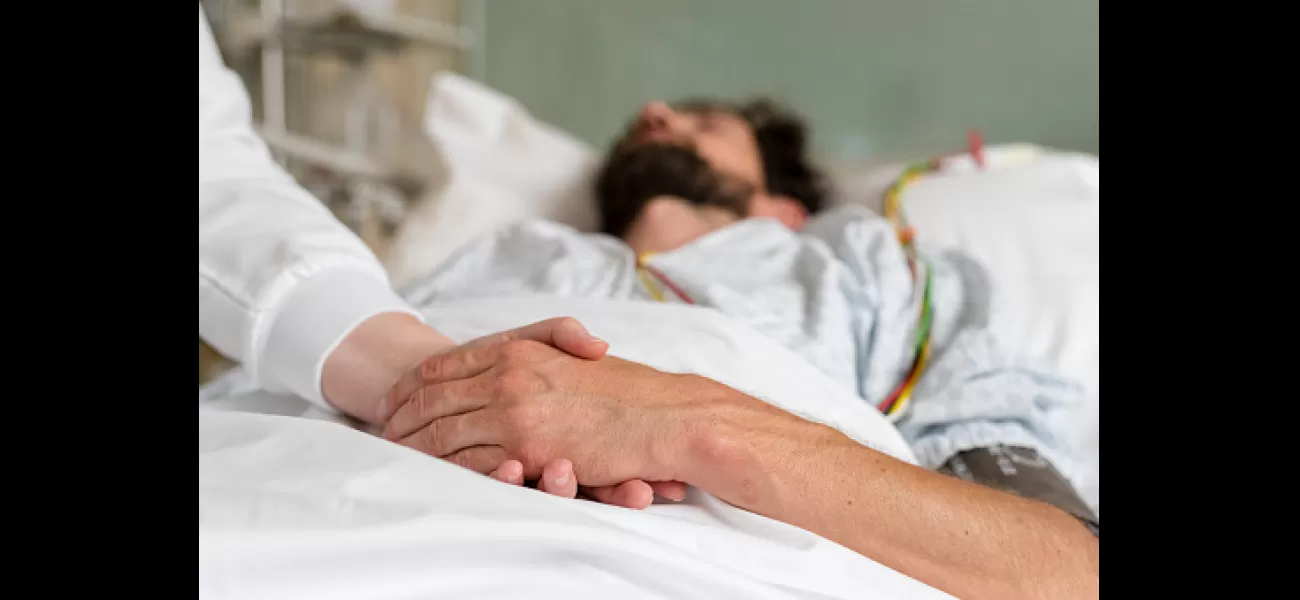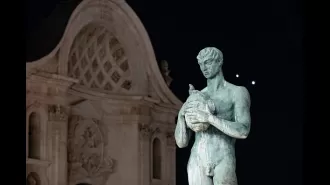Six things that commonly occur on a person's deathbed before they pass away.
It's difficult to believe these events occur.
August 25th 2024.

Death is something that we all must face eventually, but the thought of it can be overwhelming and scary. It's especially difficult to watch our loved ones pass away. However, as hospice nurse Julie McFadden shares, there are some common signs that indicate when death is near. Surprisingly, these signs can bring a sense of comfort to both the patient and their family.
Julie, who is based in LA, spends her days providing palliative care to her patients. In her experience, she has noticed some common phenomena that occur before death. While not everyone will experience all of these, there is a strong chance that one or two of these may occur.
One of the most fascinating signs is terminal lucidity, also known as "the rally" or "the surge." Julie explains that during this time, a patient who was previously very ill will suddenly have a burst of energy and appear to be getting better. This can be both surprising and comforting for loved ones, but unfortunately, it is usually short-lived. Julie believes that this surge may be due to a burst of cortisol or hormones, but the exact cause is still unknown.
Another common phenomenon is visioning, where the patient experiences visions of deceased loved ones. This is not the same as hallucinations or mental illness, as the patient is often alert and oriented during these experiences. Julie has observed that these visions are often comforting for the patient and can occur about a month before their death.
Julie also shares that some patients seem to have the ability to choose when they will die. She has seen cases where patients wait for their loved ones to arrive before passing away, or they may wait until after a milestone, such as a birthday or wedding. This ability to choose seems to be influenced by the patient's personality and their relationships with others.
The death reach and death stare are two more common phenomena that occur before death. The death reach is when a patient reaches up as if to hug or shake the hand of someone who is not there. This can last for a prolonged period and is considered a normal part of the dying process. The death stare is when the patient appears to be staring intently at something in the room. They may not respond to attempts to snap them out of it until they are ready.
Finally, Julie shares the most profound phenomenon she has witnessed: the shared death experience. This occurs when someone who is not dying feels, sees, or understands what the dying person is going through. While this may sound scary, Julie assures us that it is usually a positive experience, giving the person a sense of freedom and joy. It may also explain those times when we just know that someone has passed away, even before we receive the news.
Julie's goal in sharing these phenomena is to bring awareness and understanding to the dying process. While death may be inevitable, knowing what to expect can provide some comfort and preparation for both the patient and their loved ones. Have you ever experienced any of these phenomena? Julie would love to hear from you.
Julie, who is based in LA, spends her days providing palliative care to her patients. In her experience, she has noticed some common phenomena that occur before death. While not everyone will experience all of these, there is a strong chance that one or two of these may occur.
One of the most fascinating signs is terminal lucidity, also known as "the rally" or "the surge." Julie explains that during this time, a patient who was previously very ill will suddenly have a burst of energy and appear to be getting better. This can be both surprising and comforting for loved ones, but unfortunately, it is usually short-lived. Julie believes that this surge may be due to a burst of cortisol or hormones, but the exact cause is still unknown.
Another common phenomenon is visioning, where the patient experiences visions of deceased loved ones. This is not the same as hallucinations or mental illness, as the patient is often alert and oriented during these experiences. Julie has observed that these visions are often comforting for the patient and can occur about a month before their death.
Julie also shares that some patients seem to have the ability to choose when they will die. She has seen cases where patients wait for their loved ones to arrive before passing away, or they may wait until after a milestone, such as a birthday or wedding. This ability to choose seems to be influenced by the patient's personality and their relationships with others.
The death reach and death stare are two more common phenomena that occur before death. The death reach is when a patient reaches up as if to hug or shake the hand of someone who is not there. This can last for a prolonged period and is considered a normal part of the dying process. The death stare is when the patient appears to be staring intently at something in the room. They may not respond to attempts to snap them out of it until they are ready.
Finally, Julie shares the most profound phenomenon she has witnessed: the shared death experience. This occurs when someone who is not dying feels, sees, or understands what the dying person is going through. While this may sound scary, Julie assures us that it is usually a positive experience, giving the person a sense of freedom and joy. It may also explain those times when we just know that someone has passed away, even before we receive the news.
Julie's goal in sharing these phenomena is to bring awareness and understanding to the dying process. While death may be inevitable, knowing what to expect can provide some comfort and preparation for both the patient and their loved ones. Have you ever experienced any of these phenomena? Julie would love to hear from you.
[This article has been trending online recently and has been generated with AI. Your feed is customized.]
[Generative AI is experimental.]
0
0
Submit Comment





